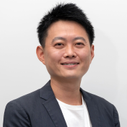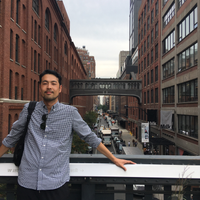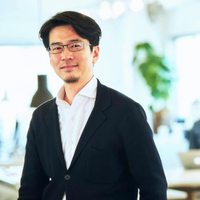Starting out at a Japanese design firm in Tokyo
This is part three of a series on my experience of finding and joining a design company in Tokyo. Read part one and part two here.
New job, new normal
So starting a new job in a foreign language was always going to be hard. But joining A.C.O. in the middle of the pandemic turned the difficulty dial up to eleven. Remote work has been tough for everyone, but in particular it made understanding Japanese cultural nuances so much harder for me.
Japan is generally seen as a high-context culture; communication is based on inherent understanding. In a low-context culture such as the US, direct verbal explanations keep everyone aligned. Trying to read the atmosphere and grasp the relationships between people is incredibly hard through a Zoom call, where you miss many cues like body language.
Office life
Like many offices during the pandemic, A.C.O. has been primarily remote. We can still use the office if we choose to, so I tried wherever possible to go there and be around people to get as much context as possible. Although there’s usually only 5-6 people there each day, it’s still been really helpful.
I have a 90 minute commute on the train. Compared to South Africa, the commute in Tokyo is much quieter — people are immersed in their own little world on their phones or books and nobody talks. My South African commute was a way to interact with the rest of society by talking with strangers (which is perfectly normal!) In Tokyo, it’s just a mode of transport (albeit a very timely, efficent one).
To help new hires integrate, A.C.O. runs a Welcome Relay where newcomers are passed baton-like through 30 minute remote 1on1’s over several weeks. It’s not compulsory to meet all the employees, but I found it really helpful to spend a little time talking with everyone. This helped me find shared interests and get introduced to some non-work Slack channels to join (like a Manga channel) which has been a great place to have some more casual conversations. Gradually I figured out the relationships between people, noticed the unspoken cues and started to overcome the difficulty of remote communication in a high-context culture.

Above: In the office with Takeshi, who also joined the team this year
Information overload
Onboarding mid-pandemic in Japanese pushed my mental strength to the limit. It required a huge effort to understand everything; learning new vocabulary, tools and processes every day. Everyone went out of their way to explain things carefully, but the language barrier made every single thing a challenge.
I remember on my fifth day, after a few hours of work my brain just couldn't take any more and I curled up on the floor. A Japanese colleague who had also recently joined A.C.O. entered the room. I picked myself up, walked over to him saying “I'm completely lost, help me!”. His response? “Me too!”. We spent the next hour sharing our difficulties and fears of finding our place in a mostly remote environment. I didn't expect this type of openness in Japan and it gave me what I needed to push through the initial difficulties.
Global collaborations
A.C.O. is part of Monstarlab — a digital consulting firm of about 1200 people. The group is spread all around the world, and HQ’d here in Tokyo, in the same building as A.C.O.. There’s a huge mix of people and I’ve been able to meet many of them in my first few months at A.C.O.. At one point I would start the day working with Monstarlab colleagues in New York on a smart city project, then jump into a knowledge share call with Denmark and end the day chatting with a designer in the Philippines or Dubai. Although not every day is quite so global, A.C.O. now has several members with international backgrounds here in Tokyo — so there’s a growing mix of experiences and perspectives which is fascinating.
Working with the New York team on a smart city project was fun and it provided excellent insight into how different cultures approach design problems. It was great to be able to put my experience in urban planning and UX design to use — which was one of my initial goals when planning this stage of my career. I didn’t enjoy the extreme hours (the Tokyo/New York time difference is tough!) but it was easy to adapt our work styles to each other and my brain appreciated the break from Japanese.

Above: In the office with James, A.C.O.’s Creative Director
Unexpected freedom
I came from work environments with fixed 8-hour office days. It has been refreshing at A.C.O. to have the freedom to design my workday with a bit more flexibility. Although we track our hours carefully, it’s great to be able to choose where I work, and adjust work times around other non-work activities. One of my colleagues uses this flexibility to take a mid-morning surfing session, while James, our Creative Director often calls in from the Japanese countryside. I'm really enjoying this freedom, and it certainly seems this isn’t the norm when I talk to friends working elsewhere in Tokyo who have to follow much stricter rules.
Tough but worth it
My first few months at A.C.O. have certainly been tough — getting used to Japanese in a remote environment was much harder than I expected. But even though communication can be difficult, I’ve found a company where the people and culture match my personality, and I can end each day feeling that I contributed something valuable.
I hope you can take something useful from my design job hunting experience in Japan, and find the design company that fits you too. If you haven’t already, take a look at part 1 and part 2, and if you’re interested to hear more about what we’re doing at A.C.O., check out our Journal or tune into the podcasts. In the meantime, happy job hunting!


/assets/images/1813/original/8a25edbc-7309-44b6-b82f-a6ad4515c59b?1651126270)





/assets/images/1813/original/8a25edbc-7309-44b6-b82f-a6ad4515c59b?1651126270)